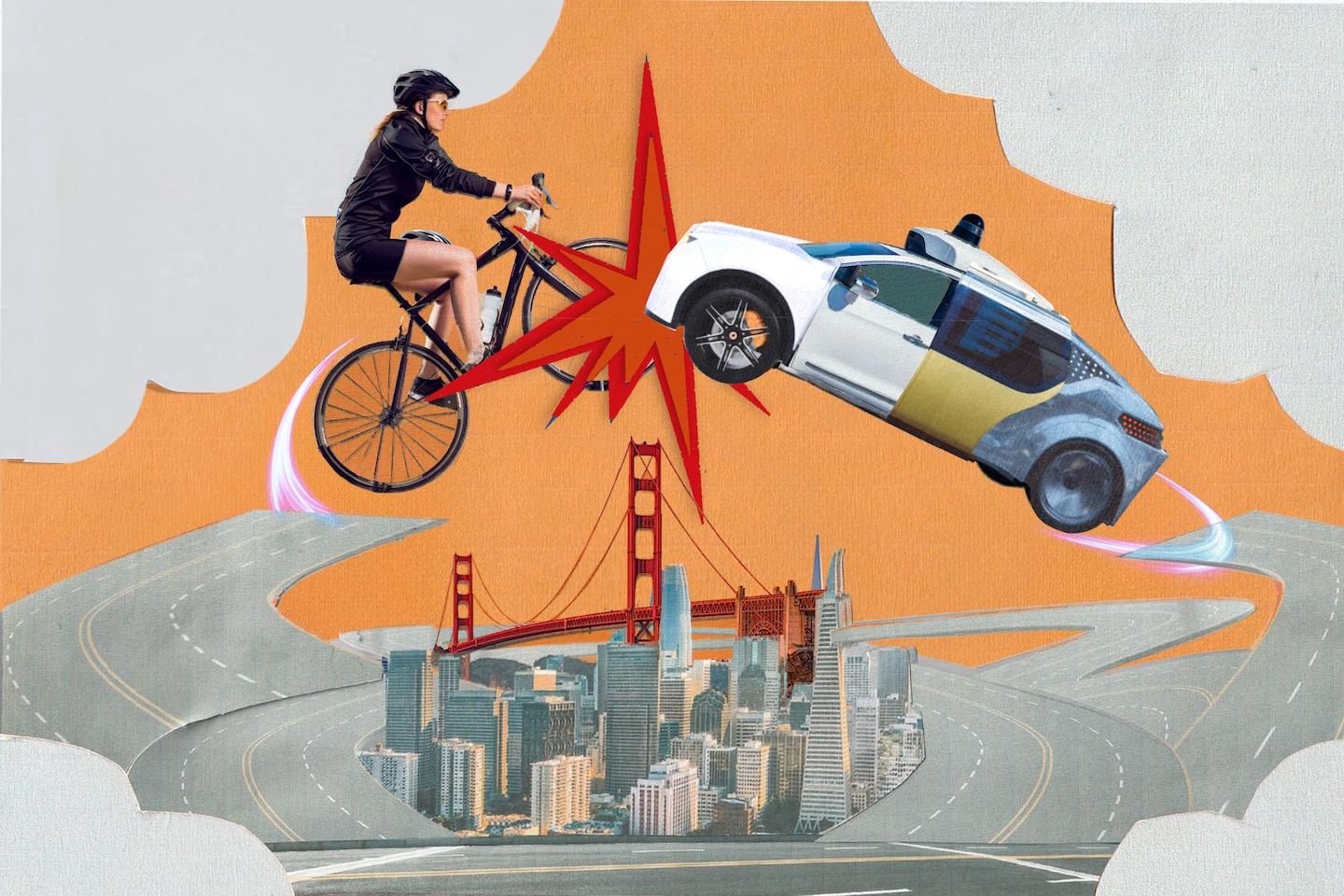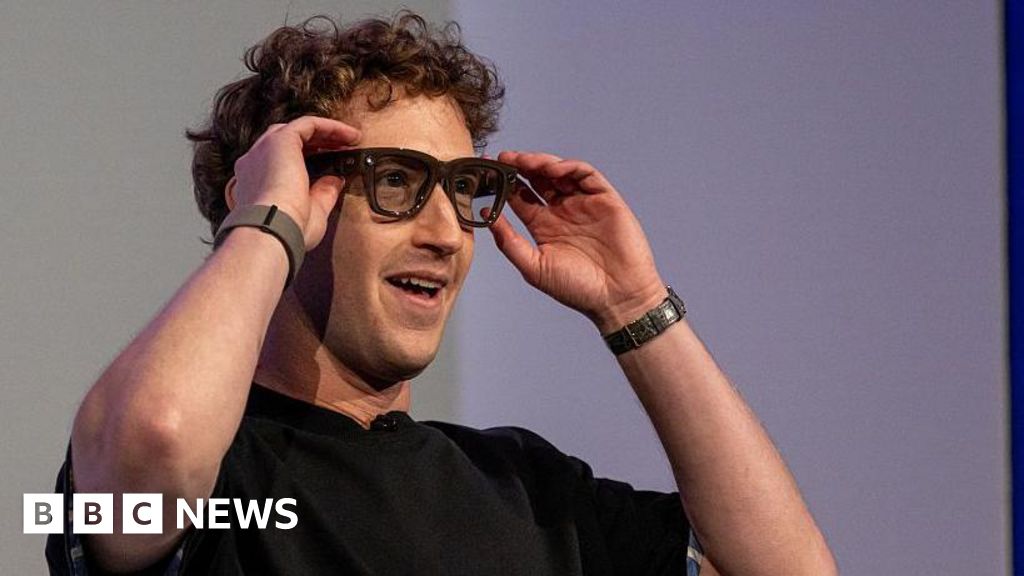
Will self-driving cars make the roads safer? Cyclists are split.
- Science
- July 7, 2024
- No Comment
- 175
In San Francisco, where cyclists already contend with angry drivers and unpredictable jaywalkers, self-driving cars present a new obstacle. In recent years, more of the vehicles have swarmed into the city, making it a national laboratory for companies to test and improve the technology.
With biking fatalities on the rise — more than 1,100 on American roads in 2022, according to the most recent federal data — autonomous car companies are pitching themselves as part of the solution. But Bay Area cyclists who have firsthand experience with the futuristic technology are wary, according to interviews and a Washington Post analysis of nearly 200 complaints about autonomous vehicles submitted to the California Department of Motor Vehicles since 2021.
Many bike riders are hopeful about a world of robot drivers that never experience road rage or get distracted by their phones. But some resent being guinea pigs for driverless vehicles that veer into bike lanes, suddenly stop short and confuse cyclists trying to navigate around them. In more than a dozen complaints submitted to the DMV, cyclists describe upsetting near misses and close calls — including Martin’s alarming brush with a Cruise vehicle that he reported in August 2023.
Cruise, owned by General Motors, and Waymo, owned by Google parent company Alphabet, are the two biggest self-driving car companies and have launched taxi-style services for paying customers. Several smaller players, including Amazon-owned Zoox, are also testing in San Francisco and other cities.
Cruise and Waymo say they prioritize bicycle safety and that their vehicles’ safety records are better than human-driven cars.
Still, Cruise is no longer allowed to operate in California after one of its cars rolled over and dragged a pedestrian who had been flung into its path by a human driver. And Waymo, Cruise and Zoox are under investigation by the National Highway Traffic Safety Administration over potential flaws linked to dozens of crashes — a sign of heightened scrutiny as the fledgling industry lays plans to expand nationwide.
Of the nearly 200 California DMV complaints analyzed by The Post, about 60 percent involved Cruise vehicles; the rest mostly involved Waymo. About a third describe erratic or reckless driving, while another third document near misses with pedestrians. The remainder involve reports of autonomous cars blocking traffic and disobeying road markings or traffic signals.
“Car was driving erratically and at least twice the speed limit on a residential street. I was nearly hit while riding my bicycle,” said one complaint about an interaction with a Waymo vehicle in March 2022. The author did not provide their name to the DMV.
Only 17 complaints involved bicyclists or bike lane disruptions. But interviews with cyclists suggest the DMV complaints represent a fraction of bikers’ negative interactions with self-driving vehicles. And while most of the complaints describe relatively minor incidents, they raise questions about corporate boasts that the cars are safer than human drivers, said Christopher White, executive director of the San Francisco Bike Coalition.
Robot cars could one day make roads safer, White said, “but we don’t yet see the tech fully living up to the promise. … The companies are talking about it as a much safer alternative to people driving. If that’s the promise that they’re making, then they have to live up to it.”
Though California is the nation’s top testing ground for autonomous vehicles, state regulators have few ways to track problems beyond citizen reports — and many interactions are not reported. That leaves officials to rely largely on companies’ self-reported data, which can be light on detail.
California regulators allowed Waymo and Cruise to expand in San Francisco last summer, a moment seen as a win for the industry and a step closer to wider adoption of the technology. Even as federal regulators dig in, Cruise is starting to return its fleet to U.S. roads and Waymo has expanded its driverless taxi service in California and Arizona.
Those moves will expose more cyclists to autonomous cars. Martin, the San Francisco rider, says he once thought of the vehicles as more predictable than human drivers. But the crosswalk incident punctured his “utopian idea” of what a future ruled by robot cars could be.
“There’s this weird sensation where there’s nothing you can do when it’s coming right at you,” Martin said. “You can’t ring your bell. You can’t shout at it. All you can do is quickly get out of the way.”
Many bicycle safety advocates support the mission of autonomous vehicles, optimistic the technology will cut injuries and deaths. They are quick to point out the carnage associated with human-driven cars: There were 2,520 collisions in San Francisco involving at least one cyclist from 2017 to 2022, according to state data analyzed by local law firm Walkup, Melodia, Kelly & Schoenberger.
In those crashes, 10 cyclists died and another 243 riders were severely injured, the law firm found.
Nationally, there were 1,105 cyclists killed by drivers in 2022, according to NHTSA, the highest on record.
Gee Kin Chou, a 73-year-old San Francisco resident who “bikes everywhere,” is eager for a future with reliable self-driving cars — especially as he gets older and one day won’t be able to hop on his bicycle. To him, the robots are courteous, predictable and a welcome contrast from distracted or drunk human drivers. But he’s also seen self-driving cars behave erratically.
In one incident last summer, which he reported to the DMV, a driverless Cruise passed “uncomfortably” close to him, nearly grazing his elbow as he biked past the Botanical Garden in Golden Gate Park. In a second incident, which he did not report, a Cruise cut him off at “full speed” while he waited at an intersection.
“I am an advocate for these things,” he said in an interview. “I don’t expect them to be perfect, and they’ll never be perfect. I just want them to be better.”
Cruise recently began to ease its autonomous cars back onto city streets, starting with human-supervised autonomous driving in Phoenix and Dallas.
In a statement, Cruise said safety around bicyclists is core to its mission. Spokesperson Hannah Lindow listed protocols the company developed with the League of American Bicyclists. They include Cruise vehicles being programmed to shift slightly in their lanes as a cyclist approaches and “regularly” updating the vehicles’ technology to recognize infrastructure such as bike lanes and bike boxes.
“Safety is the defining principle for everything we do and continues to guide our progress toward resuming driverless operations,” Lindow said.
Waymo continues operating in San Francisco, and last month made its driverless taxi service available to anyone who downloads its app. The cars are a fixture in the city, picking up and dropping off passengers like an Uber or taxi.
Keeping cyclists and pedestrians safe is paramount, said Anne Dorsey, a staff software engineer at Waymo who oversees the company’s approach to vulnerable road users. “Anybody who’s not in a big metal box, it’s my job to worry about,” Dorsey said. A frequent cyclist, she’s gone her whole adult life without owning a car.
Waymo’s tech has been trained on more than 20 million miles of driving, alongside all kinds of road users, from a group of people wearing dinosaur costumes to someone doing the worm in an intersection, Dorsey said. Its cars use multiple cameras, radar and a laser scanner to view what’s happening in all directions up to three football fields away, she said.
Waymo cars have a sensor dome on the roof that can display a message visible from all directions around the vehicle. It currently shows a graphic to inform other drivers when a car is stopping to pick up or drop off a passenger, but the company is considering other ways it could be used to communicate with human road users, Dorsey said.
“As a cyclist or as a pedestrian, I always have this fear with human drivers of ‘Does this person see me?’ ” Dorsey said, but she doesn’t have that concern around Waymo vehicles. The cars are programmed to give cyclists ample space and can recognize when a rider is a child or riding erratically, Dorsey said. The cars warn passengers to look for bikers before opening their doors, she said.
Despite those measures, a Waymo car hit a cyclist in February, causing non-life-threatening injuries. The biker was riding through a four-way stop closely following a truck when the Waymo struck them, the company said at the time. Dorsey declined to comment on the incident, which is still under investigation by San Francisco police, but said the company was learning from it.
Meanwhile, the fraction of complaints to the DMV related to bicycles demonstrates the shaky relationship between self-driving cars and cyclists. In April 2023, a Waymo edged into a crosswalk, confusing a cyclist and causing him to crash and fracture his elbow, according to the complaint filed by the cyclist.
Then, in August — days after the state approved an expansion of these vehicles — a Cruise car allegedly made a right turn that cut off a cyclist. The rider attempted to stop but then flipped over their bike.
“It clearly didn’t react or see me!” the complaint said.
Even if self-driving cars are proven to be safer than human drivers, they should still receive extra scrutiny and aren’t the only way to make roads safer, several cyclists said.
Jane Arc knows the worlds of cycling and self-driving cars intimately. Today, she’s training to become a professional triathlete. In 2018 and 2019, she worked on Uber’s self-driving car team, developing software to protect the vehicles against hackers. Arc was initially excited to work on the project, but then an Uber self-driving car hit and killed Elaine Herzberg as she pushed a bicycle across a road in Tempe, Ariz. Uber later sold off its autonomous driving unit.
“All of us got a wake-up call that this is a real thing that can and will kill people — and that was the cost of building this product,” Arc said.
#selfdriving #cars #roads #safer #Cyclists #split









